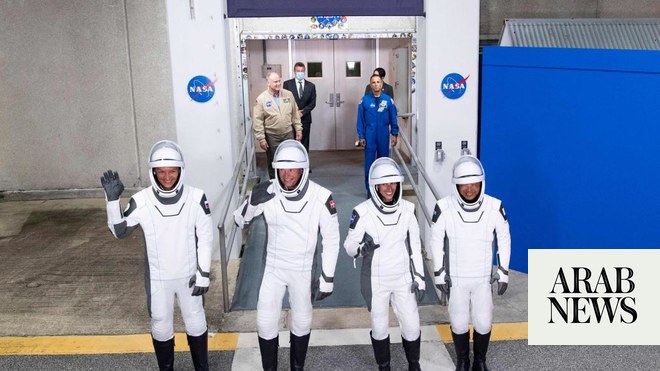
HONG KONG — China successfully launched its first crewed space mission in five years on Thursday, sending three military pilots rocketing to a new orbiting station.
The astronauts are due to stay for three months in the station’s main living module, named Tianhe, or Heavenly Harmony.
They will be carrying out science experiments and maintenance, spacewalks and preparing the facility to receive two additional modules next year.
While China concedes it arrived late at the space station game, it says its facility is cutting-edge. It could also outlast the International Space Station, which is nearing the end of its functional lifespan.
With Thursday"s launch, China has now sent 14 astronauts into space since it first achieved the feat in 2003, becoming the third country after the former Soviet Union and the United States to do so.
Flags and patriotic songs
The astronauts, already wearing their spacesuits, were seen off by space officials, other uniformed military personnel and a crowd of children waving flowers and flags and singing patriotic songs.
The three gave final waves to a crowd of people waving flags, then entered the elevator to take them to the spaceship at the Jiuquan launch center in northwestern China.
The astronauts are traveling in the Shenzhou-12 spaceship launched by a Long March-2F Y12 rocket that blasted off shortly after the target time of 9:22 a.m. (0122 GMT) with near-perfect visibility at the launch center on the edge of the Gobi Desert.
The rocket dropped its boosters about two minutes into the flight followed by the coiling surrounding Shenzhou-12 at the top of the rocket. After about 10 minutes it separated from the rocket"s upper section, extended its solar panels and shortly afterward entered orbit.
During the three months, two astronauts will conduct two long-duration spacewalks. After this mission, another three crewed spacecraft and two laboratory modules will be sent to the space station, with the aim of completing its construction by the end of 2022.
Huang Weifen, one of the chief designers on the manned space program said that during the mission the crew will be using new spacewalk suits as well as a new spacecraft. "The possibility of various problems is quite high. So for the astronauts, emergency decision-making and troubleshooting capabilities are also very high requirements," said Huang.
"Breakthroughs and innovations"
The travel time is down from the two days it took to reach China"s earlier experimental space stations, a result of “a great many breakthroughs and innovations" Gao said.
“So the astronauts can a have a good rest in the space which should make them less tired," Gao said.
Other improvements include an increase in the number of automated and remote-controlled systems that should “significantly lessen the pressure on the astronauts," Gao said.
China is not a participant in the International Space Station, largely as a result of US objections to the Chinese program"s secrecy and close military ties. However, China has been stepping up cooperation with Russia and a host of other countries.
China landed a probe on Mars last month that carried a rover, the Zhurong, and earlier landed a probe and rover on the moon"s less explored far side and brought back the first lunar samples by any country’s space program since the 1970s.
After the Tianhe was launched in April, the rocket that carried it into space made an uncontrolled reentry to Earth, though China dismissed criticism of the potential safety hazard.
The rocket used on Thursday is of a different type and the components that will reenter are expected to burn up long before they could be a danger, said Ji Qiming, assistant director of the China Manned Space Agency. — Agencies











